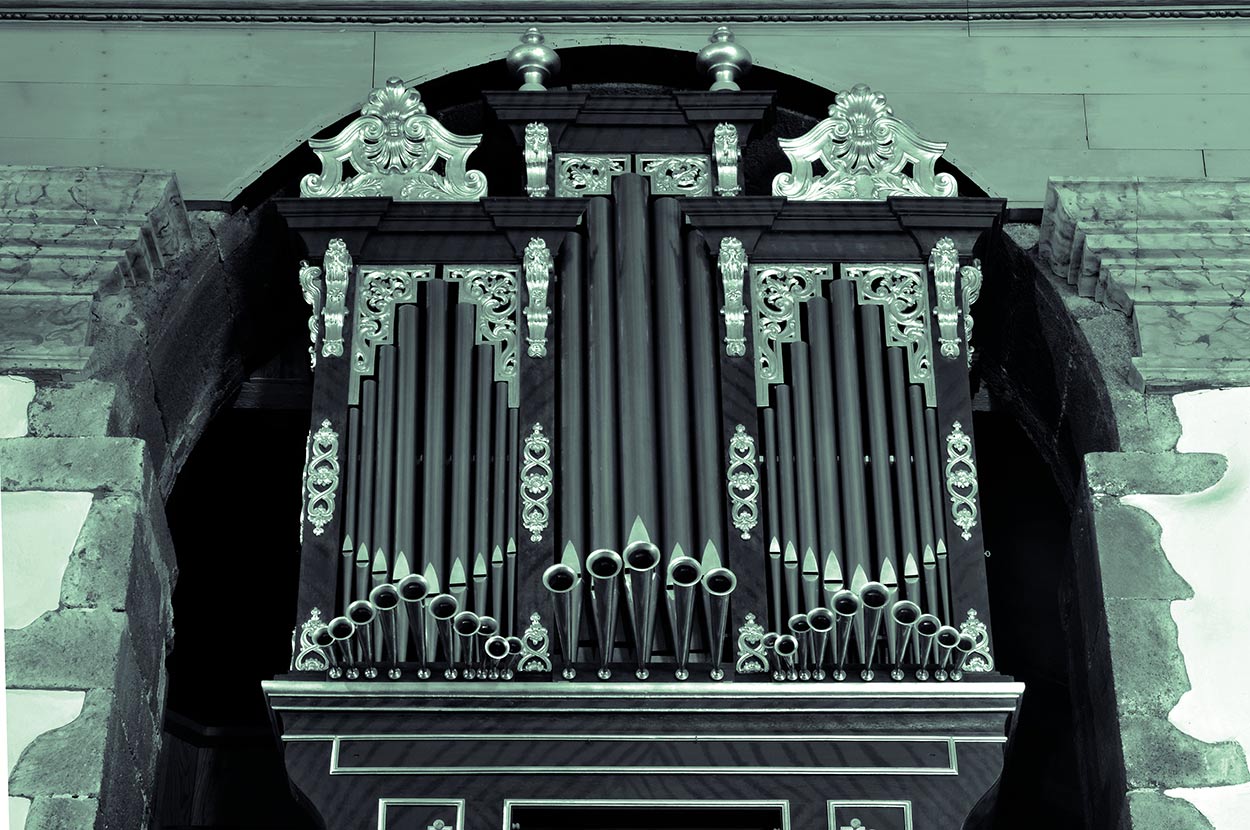![]() Unknown bulder, early 18th c.
Unknown bulder, early 18th c.
Dinarte Machado (rest.), 2005

In the historical documentation from before the 20th century there are references to two instruments: according to historical tradition, one was given to the Church of Nossa Senhora da Conceição in 1499 by King Manuel, and another acquired in 1746. As regards the Manueline organ, we may deduce that it was placed within the archway above the choirstalls on the Gospel side of the sanctuary. In the 18th century, the state of this instrument must have left much to be desired, leading to the acquisition of the second instrument in 1746. The organ arrived in Madeira in 1752, with the Council of the Treasury initially contributing the cost of purchase and later the installation costs.
The recent restoration undertaken by Dinarte Machado was done with the principal objective of returning as far as possible it to its original constitution, in accordance with indications to be gleened from the pieces of the instrument during its dismantling. Thus, the restoration always proceeded from a philosophy of taking into account the specificities of the original pieces, from the configuration of the case and its polychrome decoration, to the way the registration, pipework, bellows-work and even its placement - in the sanctuary - were returned to how they were originally. As regards the composition of the stops, the split keyboard, with the reed stop in the right hand, which the organ indicated was an original feature, which indeed characterised the instrument. The original keyboard, which was found piled in a heap, and which it was possible to repair and reassemble retains the short octave, as was usual at this period. The new pipework was completed with great rigour in accordance with the characteristics of the few original pipes that had survived, compared with the actual indications and dimensions of the windchest, which was also studied and recorded in great detail.
There can be no doubt that this is one of the loveliest organs on the island of Madeira. It is one of the instruments that conserves some of the most typical features of Portuguese organ building in the 17th century. It should be stressed that the restoration work carried out on this instrument required study of considerable documentation, as well as comparison with other instruments of the period. Since no other instruments of this kind are to be found in Portugal, recourse was had to instruments from other countries for the necessary data.
Manual (C, D, E, F, G, A-c’’’)
Flautado de 12 palmos [8’]
Flautado de 6 palmos [4’]
Flauta doce
Dozena [2 2/3’]
Voz humana [c#’-c’’’]
Quinzena [2’]
Composta de 19ª e 22ª
Sesquialtera II [c#’-c’’’]
Clarim* [c#’-c’’’]
* horizontal reed
